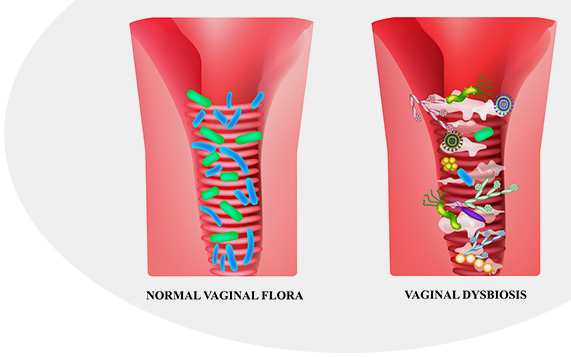
Vaginal discharge, which is produced by the vagina and cervix (cervix uteri) glands, is the body fluids that reduce the risk of infection, allowing bacteria and dead cells from the female reproductive system to be excreted outside the body. Although vaginal discharge gives strong signals that metabolism is healthy, the amount, color, odor and intensity of vaginal discharge may change due to hormonal changes. However, gynecologists and obstetricians should be consulted when vaginal discharge becomes yellow, green, odorous and permanent in some women.
Causes of Vaginal Discharge
Normal vaginal discharge is a healthy bodily function. The body constantly produces vaginal discharge to clean and protect the vagina. Change in the color, amount and intensity of vaginal discharge is usually a precursor of infection.
Possible causes of abnormal vaginal discharge include vaginitis, bacteria, infections (trichomoniasis, bacterial vaginosis, yeast infections), systemic diseases, sexually transmitted diseases, HPV and cervical cancer.
When abnormal vaginal discharge occurs with symptoms such as chronic fatigue, fever, frequent urination, weight loss and abdominal pain, medical support should be obtained without delay.
Vaginal Discharge and Cervical Wound
Vaginal discharge may trigger the formation of cervical wounds or may be also caused by cervical wounds Since the neglected vaginal discharge and wound treatments become chronic and can lead to the spread of infection and infertility, vaginal discharge and wound treatment absolutely should not be ignored.
The most characteristic symptom of cervical wounds is vaginal discharge. It may also cause pain during sexual intercourse, vaginal burning, itching, bleeding, and infertility, if not treated.
Vaginal Discharge and Wound Treatment
Tests should be performed prior to vaginal discharge and wound treatment. Vaginal discharge and wound treatment are planned in accordance with the results of diagnostic methods such as smear test, cervical biopsy, colposcopy and gynecological examination.
Drug therapy, cauterization, cryotherapy and laser treatments can be performed within the scope of vaginal discharge and wound treatment. It takes approximately 1 month to recover after cervical wound treatment, which is planned in accordance with the needs of patients.
We, as KADOMER, shape vaginal discharge and cervical wound treatments for our patients in particular, and evaluate all diagnostic and treatment processes to achieve optimal results.
